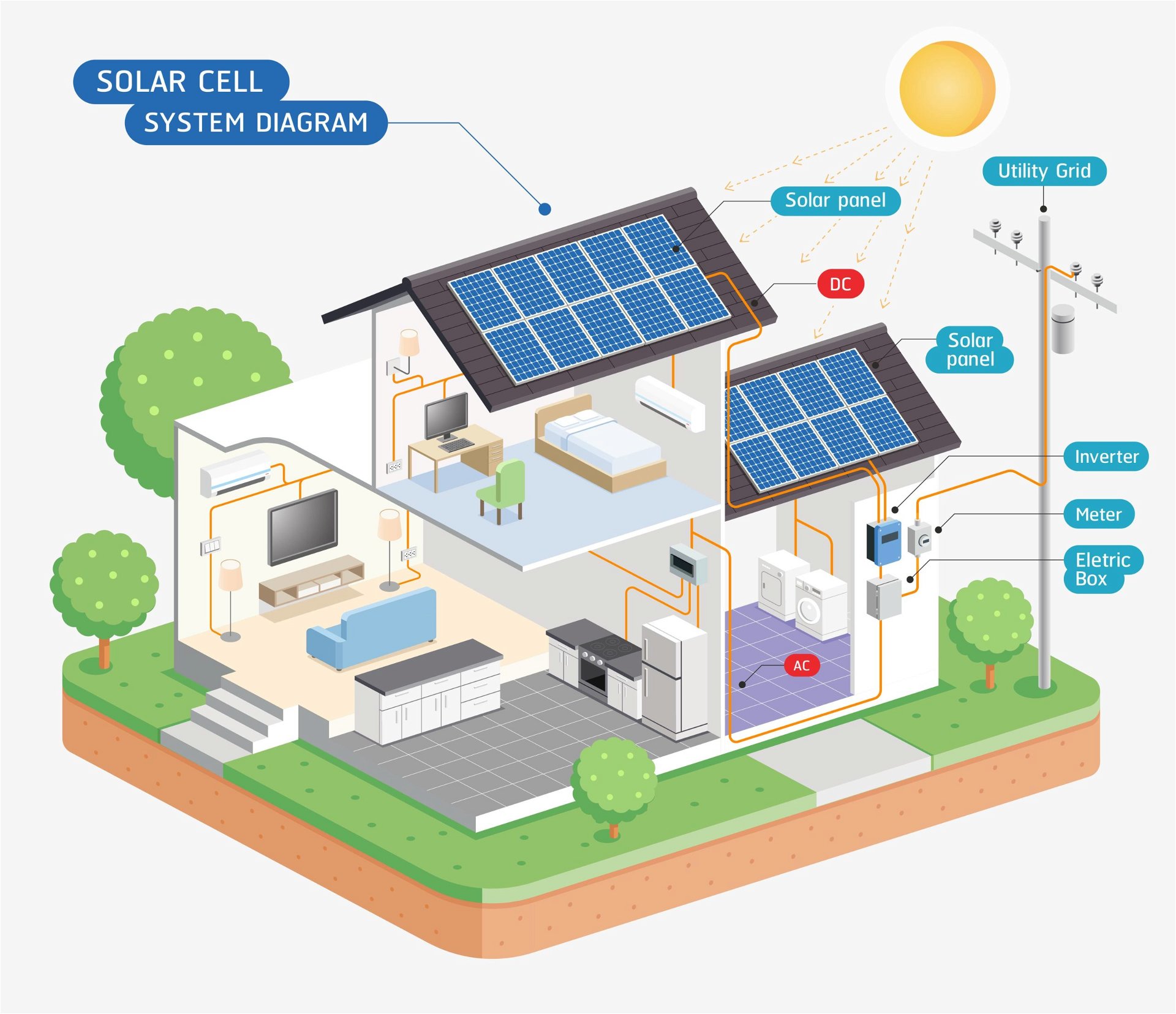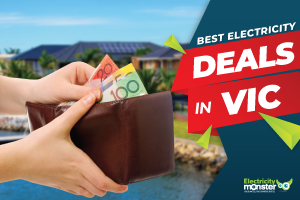Contents
10 Best Solar Feed-In Tariffs in Victoria 2024
Have you spent your hard-earned money on a solar system but feel like you could be getting a better feed-in tariff rate? This article is designed to answer all your solar questions and provide you with a list of the best solar feed-in tariffs in VIC. If you’re keen on finding the right solar plan, getting the most competitive FiT rates, or looking to upgrade your existing battery storage system you should call us now on 1300 232 848 as we can assess your power bill and provide many free solutions in less than 15 minutes.
| Retailer | Minimum FIT (c/kWh) | Maximum FIT (c/kWh) |
|---|---|---|
|
Origin Energy
|
4.90 | 12.00 |
|
Energy Australia
|
5.40 | 12.00 |
|
Simply Energy
|
4.90 | 11.00 |
|
AGL
|
4.90 | 10.00 |
|
1st Energy
|
4.90 | 9.90 |
|
Circular Energy
|
7.00 | 7.00 |
|
Arcline by R
|
6.00 | 6.00 |
|
Red Energy
|
4.90 | 5.50 |
|
Lumo Energy
|
4.90 | 5.50 |
|
Momentum Energy
|
5.40 | 5.40 |


3 Best Solar Plans in VIC 2024
Victoria boasts a large number of competitive plans with each offering enticing FiTs. Choosing the right plan however, goes beyond just the FiT, which is why we cover important features of each solar plan including incentives, variable and fixed rates, and more. Please note that plans are subject to change. Any questions regarding plan specifics should be directed toward the retailer. Want to see if we can get you a better deal on your electricity? Call us on 1300 232 848 now.
Origin Energy - Solar Boost - 1st Place
In 1st place, we have Origin Energy’s Solar Boost plan. This variable rate plan includes an attractive solar feed-in tariff of 12c/kWh and zero exit fees so customers can leave anytime.
Some features of this plan include:
- 12c/kWh
- No lock-in contract
- Zero exit fees
| Retailer | % Below VDO* | Price/year (Est.) |
|---|---|---|

Origin Solar Boost
|
0% | $1,570 |
*Victoria electricity rates are based on usage of 4000kWh/year for a residential customer on a single rate tariff in the Citipower network, the VDO reference price is: $1,571 / year. Click here for more information.
Energy Australia - Solar Max - 2nd Place
In 2nd place, we have Energy Australia’s Solar Max plan. This variable rate plan includes an attractive solar feed-in tariff of 12c/kWh and competitive energy rates.
Some features of this plan include:
- 12c/kWh
- No lock-in contract
- Zero exit fees
| Retailer | % Below VDO* | Price/year (Est.) |
|---|---|---|

Solar Max
|
0% | $1,570 |
*Victoria electricity rates are based on usage of 4000kWh/year for a residential customer on a single rate tariff in the Citipower network, the VDO reference price is: $1,571 / year. Click here for more information.
Simply Energy - Simply Solar - 3rd Place
In 3rd place, we have Simply Energy’s Simply Solar plan. This variable rate plan includes a competitive solar feed-in tariff of 11c/kWh and zero exit fees.
This plan has a great rate on offer, which is ideal for solar owners who need to rely on purchasing power on top of exporting.
Some features of this plan include:
- 11c/kWh
- No lock-in contract
- Zero exit fees
| Retailer | % Below VDO* | Price/year (Est.) |
|---|---|---|

Simply Solar
|
17% | $1,307 |
*Victoria electricity rates are based on usage of 4000kWh/year for a residential customer on a single rate tariff in the Citipower network, the VDO reference price is: $1,571 / year. Click here for more information.
Big 3 Solar Feed-In Tariffs in VIC 2024
In the table below you’ll find the current solar feed-in tariffs for the ‘Big 3’ energy retailers: Origin Energy, Energy Australia, and AGL Energy. To learn more about the FiTs in your area, give us a call or click the button below and one of our solar experts will assist you.
| Retailer | Minimum FIT (c/kWh) | Maximum FIT (c/kWh) |
|---|---|---|
|
Energy Australia
|
5.40 | 12.00 |
|
Origin Energy
|
4.90 | 12.00 |
|
AGL
|
4.90 | 10.00 |
Why Should I Go Solar?
One of the important benefits you can receive by going solar with a battery-upgradeable system comes from subsidies.
More specifically, renewable energy certificates, also known as Small scale Technology Certificates (STCs). These certificates fluctuate based on the market and in some cases their value can be relatively high. It’s also important to note that the price can plummet on these STCs, leading to a decrease in the amount of subsidisation of a solar system.
Another advantage of switching to solar is an overall improvement in energy efficiency along with smart systems that can be installed throughout your household.
Lastly, with a solar system in place, you may be eligible to receive solar feed-in tariffs which are essentially credits that lower your energy bill. The rates vary from retailer to retailer.
What is a Solar Feed-in Tariff?
A solar feed-in tariff is a payment you receive from your electricity retailer for any excess energy produced by your solar system that gets fed back to the grid.
Solar feed-in tariffs usually consist of a few cents that you’ll receive for each Kilowatt hour (kWh) of excess energy produced.
Generally, it’s not paid out in cash but will instead appear as a credit on your energy bill from your designated electricity retailer.
Unless you have a solar battery, any excess electricity your solar system produces that you don’t consume will instantly be fed into the grid.
How Do Solar Feed-In Tariffs Work?

The photovoltaic cells (PV) in your solar panels turn the sun’s solar rays into electricity. When sunlight is exposed to each solar cell, it causes the particles to vibrate.
The vibration is what we call kinetic energy. This is converted into electrical energy when it moves from the solar panels into the solar inverter. The solar inverter converts the energy into a usable form for your electrical appliances.
Your solar inverter is connected to your switchboard. The switchboard gives you the flexibility to use your energy and for the excess to be sold back to the electricity grid at a solar feed-in tariff rate.
A solar battery limits your reliance on the grid and stores the excess energy produced by your solar system for when nightfall hits.
Why Do I Want a High Solar Feed-In Tariff?
When you’re looking at a solar plan, you typically look for a high solar feed-in tariff. But what’s the reason behind this? Isn’t there a catch?
Because you want to see the maximum savings you were promised when you decided to switch to solar energy.
However, some electricity retailers offer plans with high feed-in tariffs but may also have high energy rates.
But, is the plan with the highest solar feed-in tariff (FiT) the best one for you?
It all comes down to how you use your electricity.
A household that exports heaps of excess solar energy may benefit from a high feed-in tariff. But a household that barely exports any excess energy may be better off with a moderate feed-in tariff and a sharper electricity rate.
Sounds a bit complicated? Don’t worry, we can help. Call one of our friendly solar experts, and we’ll crunch the numbers to see if you’re getting a fair solar feed-in tariff rate!
Perhaps you’re already on a current energy plan but want to shop around for something better. Phone us now and one of our energy experts will work to find you a balanced plan that helps you get a better value out of your solar system.
Can I Upgrade My Solar?
Yes, you can. Many Australians are adding battery storage systems to their existing solar energy setup. An increasingly affordable solution for homeowners looking to remove themselves from the grid or reduce their reliance on grid energy, battery systems are becoming a staple in solar households.
It’s also worth noting that eligible Victorian households can save up to $4,174 off the price of a battery through a state government rebate scheme. To learn more about federal and state rebates, we offer a free solar rebates guide that covers a variety of rebates, schemes, and incentives. Or, if you’re considering adding batteries to your current solar system, contact our solar experts at Electricity Monster now.
Single Vs Time Of Use (TOU) Rate
Two types of solar tariffs are available in Victoria, depending on your respective electricity retailer. A single rate FiT and a Time Of Use FiT.
A single rate solar FiT is a simple rate you get regardless of the time of day the electricity gets exported back into the grid. This is listed in our tables above.
A TIme Of Use (TOU) FiT is where there are different feed-in tariff rates for different times of the day. These feed-in tariff rates are ideal for households where individuals spend most of the day at work.
The TOU FiT pays the rate that reflects the demand on the energy grid at various times of the day.
There are two types of solar tariffs available in Victoria, depending on your respective electricity retailer. A single rate FiT and a Time Of Use FiT.
A single-rate solar FiT is a simple rate you get regardless of the time of day the electricity gets exported back into the grid. This is listed in our tables above.
A TIme Of Use (TOU) FiT is where there are different feed-in tariff rates for different times of the day. These feed-in tariff rates are ideal for households where individuals spend most of the day at work.
The TOU FiT pays the rate that reflects the demand on the energy grid at various times of the day.
Minimum Feed-In Tariff – What Are They?
A minimum feed-in tariff is a minimum rate that retailers have to offer to their solar customers.
The minimum rate is calculated by forecasting the wholesale electricity prices for the next calendar year.
Wholesale prices vary across different times of the day, and solar panels can only generate electricity during specific periods of the day. These ‘solar hours’ are taken into account when forecasting wholesale electricity prices.
Solar Feed-In Tariffs - The Verdict
Switching to solar is not a small commitment. It’s a long-term investment with a high initial upfront cost. But if done right, has absolutely rewarding benefits.
Remember, it’s not all about a high feed-in tariff. It also depends on your energy usage.
If you’re using the energy your solar system produces and still buying electricity from the grid, you may be better off with a sharper electricity rate and a moderate feed-in tariff.
But if you’re exporting an enormous amount of excess solar energy, then the highest solar feed-in tariff could be your best option.
We consider all factors and help find the best electricity plan within our network of providers to maximise the rate of return on your solar system. Whether you’re new to solar or looking to upgrade your current setup, we can help. Call us on 1300 584 872 today.
Other Reads You Might Like
Disclaimer
This publication reviews solar feed-in tariff rates in VIC accurate as of 07/04/2024.
Important Points to note are:
- The plans displayed have been taken from the energy fact sheets published on the retailer’s website. We do not guarantee that this information is correct or that it applies to every household in Australia.
- Comparisons have been made on the peak rates in single rate plans from retailers, plus their daily electricity supply charges.
- The Citipower network has been used to compare electricity plans, and the Australian Gas network has been used to compare gas plans in Victoria.
- The Ausgrid network has been used to compare electricity plans, and the Jemena gas network has been used to compare gas plans in NSW.
- The SA Power Networks network has been used to compare electricity plans, and the Australian Gas network has been used to compare gas plans in South Australia.
- The Energex network has been used to compare electricity plans, and the Australian Gas network has been used to compare gas plans in QLD.
- The Evoenergy network has been used to compare electricity plans, and the Jemena gas network has been used to compare gas plans in the ACT.
- The ACTO network has been used to compare gas plans in WA.
- The reference price/VDO/GAS comparison will differ based on tariff type and location (distribution area). Your actual energy bill may be significantly different from these estimates if your usage differs from the average amounts used in this calculation.
- The information in this blog cannot substitute for legal advice. No financial decisions should be made based on information from this blog.
- All dollar figures include GST.
- The plans displayed may be different than those advertised.
- The plans offered on this page may not be available in our call center.
- Get Best Offer’ is indicative of the best offer available in our database from our partners
Get a Coles or Woolies Voucher
When You Call & Switch Today
- Compare Providers
- 100% Free Service
- Brokered Over 150,000 Deals

Get a Coles or Woolies Voucher
When You Call & Switch Today
- Compare Providers
- 100% Free Service
- Brokered Over 150,000 Deals

Get a Coles or Woolies Voucher
When You Call & Switch Today
- Compare Providers
- 100% Free Service
- Brokered Over 150,000 Deals

Get a Coles or Woolies Voucher
When You Call & Switch Today
- Compare Providers
- 100% Free Service
- Brokered Over 150,000 Deals

Get a Coles or Woolies Voucher
When You Call & Switch Today
- Compare Providers
- 100% Free Service
- Brokered Over 150,000 Deals

Benjamin Tom
Benjamin Tom covers the retail energy market, with a focus on electricity, solar, and Internet. His interests include helping people navigate the complexities of the energy market while saving money on their power bills.




